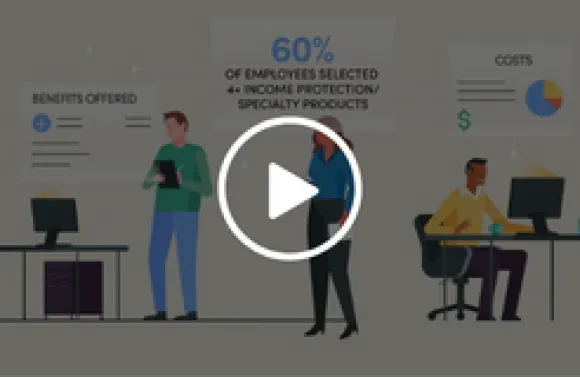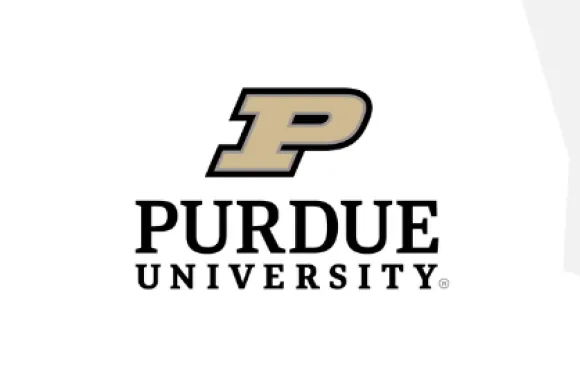
No one likes the feeling when things are out of our control, whether that’s personally or professionally. The truth is that HR and benefits professionals often feel like there's a lot out of their control.
One persistent dark cloud that helps spur this feeling is the ongoing rise of health care costs. It’s a well-covered topic with numbers that are astronomical. For example, national health spending is projected to grow at an average annual rate of 5.4 percent by the end of this decade, reaching $6.2 trillion by 2028. And employers' share of that spending accounts for nearly 20 percent.
We know from our State of Employee Benefits 2021 report that employers took on a higher percentage of premiums in 2021. Health care costs went up, but employers picked up more of the tab in 2021 for most plan types to protect employees from increasing premiums.
Of course, there are many factors that determine an employer's health care spend, and looking at the big picture can be dizzying. When that happens, it can be helpful to narrow the scope and focus on what you can control. Three areas, in particular, jump out for employers, including:
1) Premium leakage
2) Ineligible dependents
3) Prescription drug costs
Let’s take a closer look…
The Costs of Premium Leakage and How to Stop It
Employees enroll in benefits. Those elections are reflected in carrier invoices. And payroll deductions are taken out of employees’ paychecks based on those benefits. It sounds so simple. But we know it’s far more complicated.
In reality, benefits professionals spend a ton of time doing manual payroll reconciliation — a tedious task that’s made even more challenging when departments are already spread thin. Or they may not even do it at all and risk losing thousands of dollars each month.
So, what can you do to stop premium leakage? Enter Closed-Loop Payroll.
There’s a lot of risk and cost associated with manual payroll processing. There’s also a significant cost to not reconciling. Benefitplace helps reduce risk while automating the process to recover uncollected premium.
With a “closed-loop” payroll process, administrators can validate actual payroll deductions against the amount sent to Benefitplace, identify variances and automatically recalibrate deductions for subsequent payroll files. Closed-loop payroll helps validate accuracy by balancing contributions and deductions throughout the year. Employees are protected from overpaying, while organizations collect appropriate contributions.
For example, let’s say a new hire becomes eligible on the first of July with a 30-day grace period to elect coverage. If the employee is paid semi-monthly but doesn’t make their election until the 25th of the month, that means they missed two deductions. To correct this error, Benefitplace automatically applies retroactive payment adjustment based on the employer’s distribution rules.
To help put this into context with a real-life scenario, one large retailer found $2.8 million in variances over just three months. The employer was able to either recover that unnecessary expense or put it back in employee paychecks.
What Are Ineligible Dependents Costing You?
Dependent eligibility is one area where unnecessary added costs could be hampering your health benefits. Estimates for the percentage of ineligible dependents detected in a plan are between four to nine percent on average. With the average cost of a dependent about $4,570 annually, that number can add up.
Ineligible dependents also put employers at risk in other ways. Self-insured employers have the fiduciary duty to administer plans properly, meaning that only eligible dependents should receive benefits. If an outside audit on the employer were to occur, that could result in being in noncompliance and lead to fines.
Here's what it looks like to avoid that unnecessary cost with dependent verification...
Covering everyone your health plan should, and no one else, is vital to a plan’s financial stability and an employer’s ability to continue to offer a great benefits program. With industry standards showing that employers are likely carrying a number of ineligible dependents, it’s necessary to take steps to enforce eligibility rules and improve plan stability.
Modern technology partners can help take on that work. For example, Benefitfocus offers a range of verification services to help protect an employer’s plan, while taking work off a team’s plate. This straightforward process includes project management, member notification and communication, documentation and auditing, and removal of dependents.
Skyrocketing Prescription Drug Costs
Since 2014, drug prices have increased by 33 percent, outpacing price increases for any other medical commodity or service. Soaring pharmacy costs are largely attributed to drug manufacturers. Of course, the issue is more complex. Prescription costs depend on the patient’s health plan, formulary, deductible, pharmacy, and rebate structure. Another factor often not considered is the prescribing physician who can be responsible for wasteful spending — through no fault of their own. They’re often considering the patient and the medication they know. It’s impossible to be an expert on all the prescription cost factors specific to each patient.
Nonetheless, the issue remains, which has multiple repercussions for employers. The cost of medications can be a burden on employees, some of which will forego care or potentially even change jobs to get coverage. On the other hand, employers are already footing a large bill per employee for prescription drug costs.
The solution? Drug interchange for lower-cost alternatives.
The factors involved in prescription drug costs are complex. By injecting greater transparency in the prescribing process, plan members can get the drugs they need at the most affordable price.
Benefitplace Rx Insights provides that layer of transparency and automation, filling the knowledge gap for prescribers and patients. Through ongoing analysis of the employer’s prescription claims data and formularies, Rx Insights identifies drugs for which there is a lower-cost alternative and automates the process of getting the prescription switched for the member — leading to immediate savings for both the member and the employer.
Prescription behavior change complemented by an employer’s PBM or pharmacy consulting strategy can create significant savings. That could be anywhere from a five to 15 percent reduction in annual employer Rx spend. One large beverage distributor was able to use this approach to reduce spend by 9.5 percent for a savings of nearly $400,000 year over year.
Using Technology to Stop Wasteful Spending
It’s important to know where each of these elements stands, but that’s not enough. Taking action is the only way to break the cycle of wasteful spending.
Benefits professionals are tasked with optimizing benefit plans in a cost-conscious way but may not have the bandwidth or tools to do so. That’s where technology comes in. For companies of any size, using modern technology can automate traditionally labor-intensive tasks, while also eliminating errors and making sure to stop money from going down the drain.
Not only that, but a platform that incorporates these elements means HR departments have a single, unified place from which to manage the full scope of benefits.
Gain more insight into what it takes to to help your organization reduce health care costs while attracting and retaining top talent. Download the ebook, Navigating the New Era of HR & Benefits.
To learn more about how our solutions can help your company, check out the Benefitplace™ overview.


